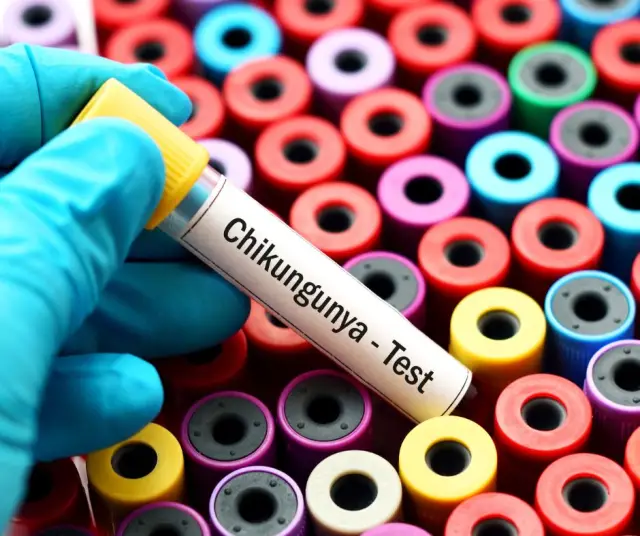Chikungunya is a mosquito-borne viral disease that has gained global attention in recent years due to its rapid spread and debilitating symptoms. Since its first identification in Tanzania in 1952, chikungunya has affected millions of people in different parts of the world, especially in tropical and subtropical regions.
What is chikungunya?
Chikungunya is a mosquito-borne viral disease that has emerged as a global concern due to its rapid spread and the disabling symptoms it causes in those who contract it. Originally from Africa, specifically identified for the first time in Tanzania in 1952, this disease has extended its reach to various parts of the world, especially in tropical and subtropical regions where the transmitting mosquitoes, mainly Aedes aegypti and Aedes albopictus, find a habitat conducive to its transmission. proliferation.
The word "chikungunya" comes from the Makonde language, spoken in Tanzania and Mozambique, and translates as "to bend", referring to the severe joint pain that characterizes this disease and which can lead those affected to adopt a hunched posture. This virus, belonging to the Alphavirus genus, spreads mainly through the bite of infected mosquitoes, although cases of vertical transmission from mother to child during pregnancy or childbirth have also been reported, as well as very rare cases of transmission through blood transfusions.
Transmission
Transmission of chikungunya occurs when an infected female mosquito bites a person and transfers the virus to their bloodstream. Once infected, the person can become a source of infection for other mosquitoes if they are bitten during the period when the virus is present in their blood, which can last several days.
Apart from transmission by mosquito bite, cases of vertical transmission have also been reported, that is, from mother to child during pregnancy or childbirth, as well as very rare cases of transmission through blood transfusions.
Symptoms
Chikungunya symptoms usually appear 4 to 7 days after the bite of the infected mosquito, although the incubation period can vary from 2 to 12 days. The most common symptoms include:
Fever: It is usually high and appears suddenly.
Joint pain : It is the most characteristic symptom and can be very intense. It mainly affects the joints of the extremities, such as the hands, wrists, elbows, knees, ankles and feet. The pain can be disabling and last weeks or even months.
Muscle pain: Often accompanied by weakness.
Skin rash: It may appear in the form of red spots or small blisters.
Fatigue: Feeling of extreme tiredness.
In some cases, especially in older people, the disease can cause serious complications, such as encephalitis, myelitis, or heart problems.
Diagnosis
The diagnosis of chikungunya is based mainly on the evaluation of the patient's clinical symptoms and laboratory tests to detect the presence of the virus or antibodies against it in the patient's blood. The most common tests include polymerase chain reaction (PCR) and serological tests.
It is important to note that the symptoms of chikungunya can be similar to those of other mosquito-borne diseases, such as dengue and Zika, so an accurate diagnosis is essential for proper treatment.
Treatment
Currently, there is no specific treatment for chikungunya. Disease management focuses on relieving symptoms and supportive measures to help the patient recover. Rest, adequate fluid intake, analgesics and anti-inflammatories are recommended to relieve pain and fever, and physical therapy to improve mobility in case of persistent joint pain.
In severe or complicated cases, hospitalization may be necessary for intravenous treatment and close medical monitoring.
Prevention
Prevention of chikungunya relies mainly on measures to control the mosquito population and prevent bites. Some of the most effective preventative measures include:
Eliminate mosquito breeding sites: Eliminate containers that can accumulate stagnant water, such as old tires, water containers, flower pots and other outdoor objects.
Use insect repellent: Apply mosquito repellent to exposed skin and clothing.
Wear appropriate clothing: Wear long-sleeved clothing and long pants, especially during dawn and dusk, when mosquitoes are most active.
Install mosquito nets: Install mosquito nets on windows and doors to prevent mosquitoes from entering the home.
Travel with caution: If traveling to areas where chikungunya is endemic, take extra precautions to avoid mosquito bites.
Chikungunya is a mosquito-borne viral disease that can cause debilitating symptoms, especially severe joint pain. Although there is no specific treatment, most people make a full recovery with time and appropriate supportive measures. Prevention plays a crucial role in controlling the disease, and it is important to take measures to avoid mosquito bites and reduce the mosquito population in affected areas. With a combination of public awareness, vector control and vaccine development, we hope to reduce the burden of chikungunya worldwide.
